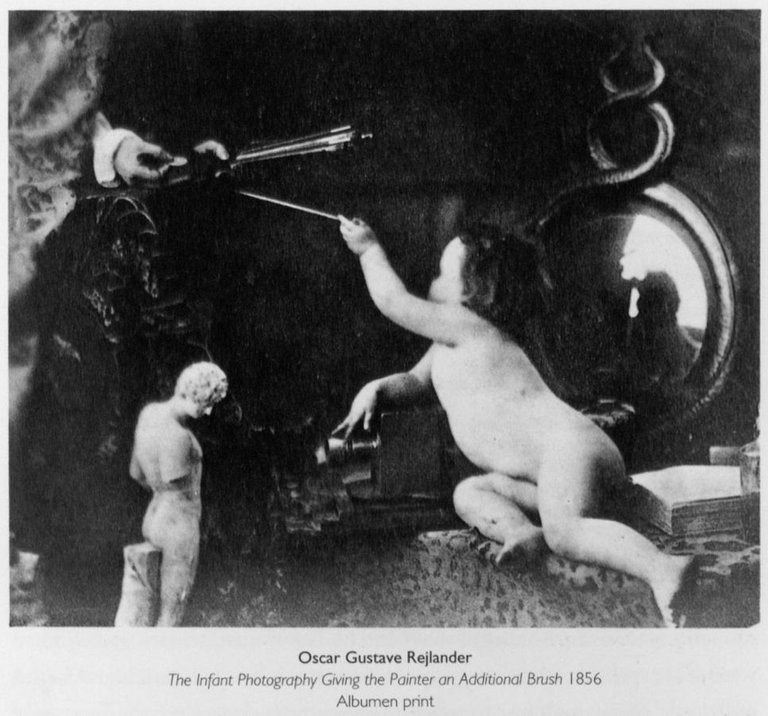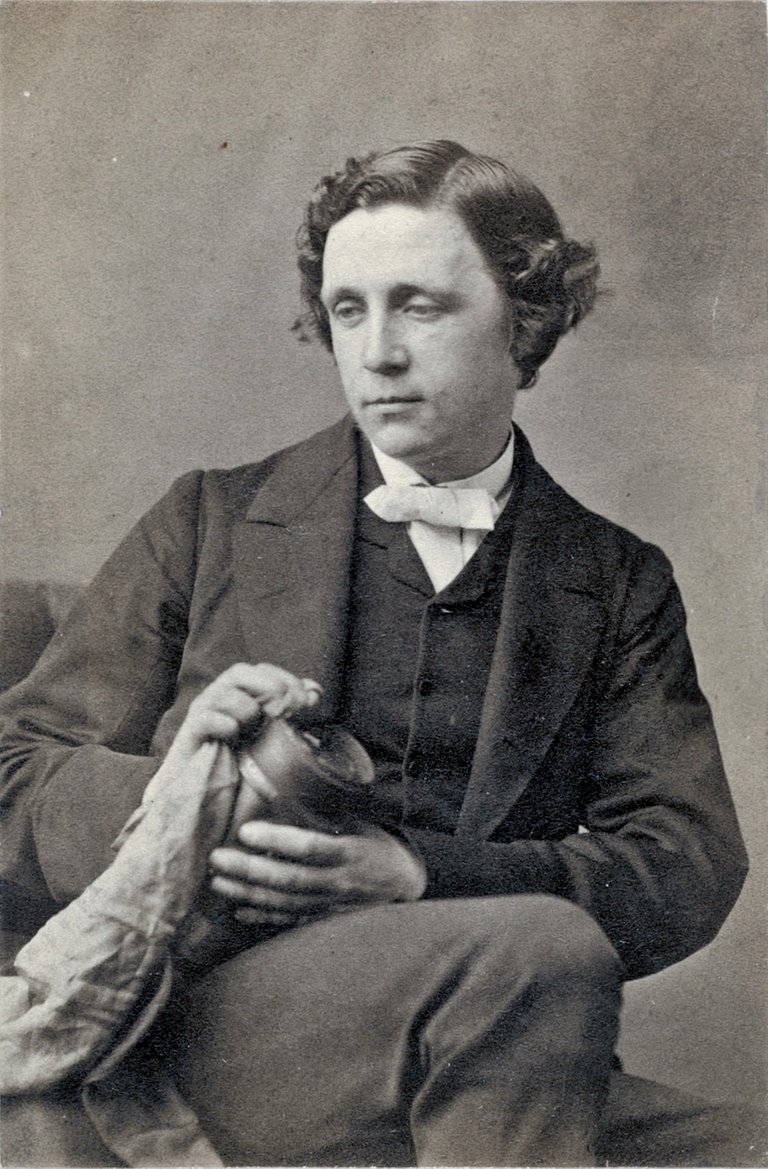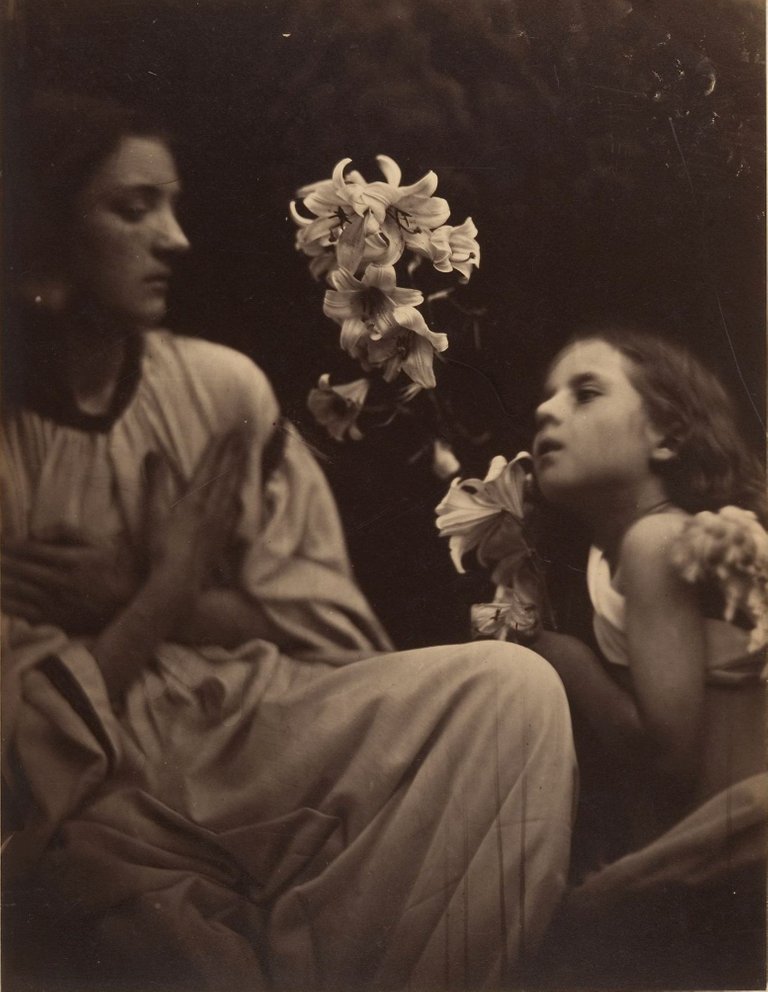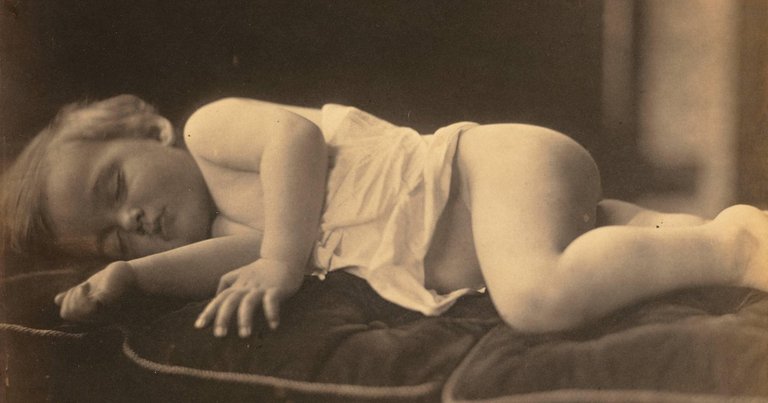[Art + Photography] Genesis Oasis
Bromeliads are a family of hardy little tropical plants almost exclusive to the American continent (except for one species in west Africa) that include those that produce the pineapple fruit. The main characteristic of many of these plants is that they do not need to be planted on the earth, they can very well grow on cacti or on rocks or trees and live off of the rain that they catch and contain withing the chalice like structure created within the center of their leaves. In this center chalice usually there is a micro pond of water that can be the home for an astounding number of animal and bug species, including some tree frogs, salamanders, and even a kind of crab in Jamaica.
And now you know why I titled this series of transformations "Genesis Oasis", as my original photograph is a picture of one of these tiny ponds within the middle of a Bromelia. In it I captured a flowering little purplish flower just blooming out of the water. I've seen tiny little frogs living in these pools, but alas there were none when I photographed this one.
For this series of transformations I went for the ape abstract look. So there is not much to explain for each image, they're just abstract works of art that have their genesis in a natural biological pool of life, and they are ordered more or less according to preference, from most to least. Enjoy.

Genesis Oasis Abstract Transformation #1
Well, that one wouldn't look out of place in some abstract art exhibit, would it?
As usual the following is the original photograph for these transformations and it depicts the original natural beauty of a Bromelia's center pond with the shape of an inverted heart (kind of corny, I know) mirroring the sky and its little delicate flower popping out within the middle of it.

The Genesis Oasis original photograph
That photograph was taken with an Olympus SH-25MR camera, and shot at f/3.9 and 1/250th sec. ISO 1600 setting.
Now let's continue with the other abstract art like transforms of our Genesis Oasis photo.

Genesis Oasis Abstract Transformation #2

Genesis Oasis Abstract Transformation #3

Genesis Oasis Abstract Transformation #4

Genesis Oasis Abstract Transformation #5

Genesis Oasis Abstract Transformation #6

Genesis Oasis Abstract Transformation #7

Genesis Oasis Abstract Transformation #8

Genesis Oasis Abstract Transformation #9
So, which one of the abstract transformation of our Genesis Oasis did you like best?
The Genesis of Photographic Art
“For me the noise of Time is not sad: I love bells, clocks, watches — and I recall that at first photographic implements were related to techniques of cabinetmaking and the machinery of precision: cameras, in short, were clocks for seeing, and perhaps in me someone very old still hears in the photographic mechanism the living sound of the wood.”
― Roland Barthes, Camera Lucida: Reflections on Photography
The genesis of Photography as an art form was not straightforward and easy to pinpoint because nobody thought it as an art medium when it was invented around the year 1839. Initial uses of photography were actually mostly experiments into what could be preserved as a picture due to its initial limitations in exposure time, camera size and such. Also early photographs were mostly attempts at documenting historical events, portraits, group photos of important meetings, shots of children, pets or noteworthy landscapes.
To define some photographs as artistic there has to be the conjunction of an artist (not just a snapshot taker) working behind a camera and seeking to produce more than just a capture of anything in front of the camera. As an artist the fine art photographer wants to have a composition, he pays close attention to focus, lighting, the posing and position of the subjects in the photograph, even later on when he develops and post produces each picture he is aiming at much more than just documenting an image. The artist may take and then edit dozens or maybe hundreds of pictures seeking for the perfect end result where everything converges into something unique and meaningful.
So who could be the first photographers that should be considered the parents of photographic fine art? I will concentrate on two that should be considered the first two fine art photographers, a man and a woman.
First there is Oscar Gustave Rejland, thought to have been born in Sweden around the year 1813. He studied arts in Rome, and then settled in England as a painter and miniature portraitist. He later abandoned his earlier profession and adopted the one of portrait photographer that had been recently invented, and through which he believed he could achieve what he couldn't through painting. He was an avid experimenter and inventor of photographic developments, including a method of photographic printing which he invented, as well as negative retouching methods at which he was a master, double exposure, and photo-montage.
His preferred style of artistic photography is quite academic, heavily planned and using a lot of props, with subject matter and compositions relating to allegory, myths and historical events. The photograph you can see below taken around 1856 is a clear example of his style.

Oscar Gustave Rejlander's Infant Picture, around 1856
Image source
Regarding this picture a comment on it on the website of the J. Paul Getty Museum reads:
"Rejlander employs a narrative device from painting: the use of figures, or parts of figures, as allegorical representations for ideas. A very young child represents the infant medium of photography. The Painter appears only as a hand extending into the frame at the upper left, although the traditional arts are also represented by the sculpture reproduction in the lower left corner. The Infant Photography, identified by the camera on which the child supports himself, faces away from the camera, his features totally obscured. The mirror behind the child gives a clear reflection of Rejlander at his camera, making this image."
The J. Paul Getty Museum: The Infant Photography Giving the Painter an Additional Brush
He served as a collaborator for Charles Darwin on several occasions late in his life and this gave him a lot of fame. He was a very close friend of Lewis Carroll (author pseudonym for the Alice in Wonderland books, his real name was Charles Lutwidge Dodgson) as well as his teacher (Carroll was also an accomplished photographer), and Carroll collected the initial works of Rejlander, he also collaborated with him solving technical photographic issues. Rejlander was the author of one of the most noteworthy portraits of Lewis Carroll, which you can see below.

Lewis Carroll portrait by Oscar Gustave Rejlander
Image source
Julia Margaret Cameron, born in Calcutta in 1815 but who moved to England by the 1860s, was another important fine art photographer of the beginnings of photography. She was a contemporary of Oscar Gustave Rejlander, and she probably learned the initial techniques of photography from him and Lewis Carroll on a trip they made to visit her neighbor and friend Alfred Lord Tennyson for a photography shoot in the Isle of Wight. She actually started late in life in that profession at age 48, when her daughter and son-in-law gave her her first camera as a Christmas gift, a wooden box with a Jamin brand lens. “From the first moment I handled my lens with a tender ardour,” was what she wrote not long after getting it, “and it has become to me as a living thing, with voice and memory and creative vigour.” She was deeply religious, aristocratic, well-read and somewhat of an eccentric with such friends in Victorian poetry and scientific circles as Alfred Lord Tennyson and Sir John Herschel, and so they inevitably became Cameron’s favorite subjects along with many other notables of Victorian English society.
Major influences of her work can be found in literature, the Renaissance, Pre-Raphaelite painting with authors like Edward Burne-Jones or John Everett Millais, as well as in the Bible. In a letter she sent to her friend Sir John Herschel, Cameron explained to him in writing of her intentions of aligning photography with art: "My aspirations are to ennoble Photography and to secure for it the character and uses of High Art, combining reality with poetry and ideal beauty." She believed that photography was the way to resuscitate sacred art.
In the Study below her use of soft focus gives the figures a dreamlike appearance that contrasts with the sharp focus of the flowers.

One of Cameron's sacred art Sutdies
Image source
Due to her unorthodox and seemingly slovenly photographic techniques, she was not well appraised by the photographers and critics of her time, and was almost unknown until her prolific (over 1200 surviving photographs) artistic works were more widely popularized and appreciated during the last half of the 20th century.

"My Grandchild, Archie Cameron, Aged Two Years, Three Months, 1865"
Image source
More information and picture galleries of these founding artist parents of photography on these websites:
“I have discovered photography. Now I can kill myself. I have nothing else to learn."
― Pablo Picasso
#art #photography #life #steemsquad #minnowsunite

Feel free to upvote, follow and check my other posts.
All follows will be followed back.
https://steemit.com/@catsmart
Amazing art! And thank you for turning me on to Oscar Gustave Rejlander, I had no idea anyone was doing anything that innovative in photography that early!
Thanks @dylantrussell Yes, he could be considered the first artistic photographer ever. Lewis Carroll too, who was his student, by the way, but much of his photographic work was lost. Cheers.